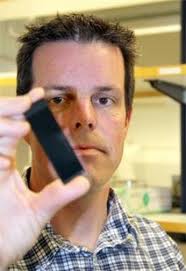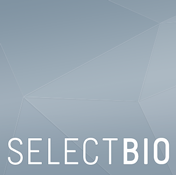Co-Located Conference AgendasAdvances in Biodetection & Biosensors | Advances in Microarray Technology | Lab-on-a-Chip European Congress | Single Cell Analysis Europe 2014 | 

Monday, 10 March 201408:00 | Registration | |
Advances in Protein and Antibody Arrays |
| | 08:30 |  | Keynote Presentation Analysis of Signaling Networks in Human Tumours
Markus Templin, Head, University of Tuebingen, Germany
|
| 09:30 | Antibody-centric Profiling of Plasma Proteins in Disease Biobanks
Jochen Schwenk, Director- Plasma Profiling Facility, KTH Royal Institute of Technology, Sweden
Applications of bead-based affinity arrays will be presented from various larger scaled efforts within plasma biomarker discovery and verification. | 10:15 | Coffee and Networking in Exhibiton Hall | 10:45 | High Throughput Unbiased Proteomics and Healthcare
Larry Gold, Chief Executive Officer/Chairman, SomaLogic, United States of America
Using special affinity reagents – a new class of aptamers called “SOMAmers” – we have built a broad human proteomic array. We measure quantify human proteins (in blood, tissues, or other matrices) with high accuracy and sensitivity. The data provide biomarker discovery for a broad set of diseases and conditions, including cardiology, oncology, autoimmune diseases, rare diseases, and nutrition. | 11:30 | Use of Reverse Phase Protein Arrays to Elucidate Impact of Targeted Drugs on Signaling Networks
Ulrike Korf, Senior Scientist/Group Leader, German Cancer Research Center, Germany
Analyzing signaling network dynamics upon exposure to targeted drugs might allow insights into drug response and resistance mechanisms. Using reverse phase protein microarrays (RPPA) as experimental platform, quantitative proteomic data were generated by exposing human breast cancer cell lines to targeted drugs such as trastuzumab. | 12:15 | Lunch and Networking in Exhibition Hall | 12:45 | Poster Viewing Session | 13:00 |  Free Workshop Free Workshop
Takara Clontech Lunchtime Workshop - Improved cDNA Library Generation for Transcriptome Analysis from a Single Cell
,
| |
Molecular Diagnostics |
| | 14:00 |  | Keynote Presentation Harvesting the Immune System as an Early Sensor for Disease using Recombinant Antibody Microarrays
Christer Wingren, Associate Professor And Lecturer, Lund University, Sweden
We exploit the immune system as an early and specific sensor for disease, targeting e.g. various autoimmune conditions, using recombinant antibody micro- and nano-arrays. The optimized array technology platforms and applications thereof will be presented. |
| 14:45 | Usage of Polymers in Micro Array Spotting
Thomas Brandstetter, Group Leader, University of Freiburg, Germany
One of the key problems in the development of biochips for a given analytical problem is the determination of suitable chip parameters such as probe affinities and optimized hybridization conditions like buffer concentrations and temperature. Major drawbacks are lack of robustness, loss of sensitivity and specificity compared to conventional methods, the consumable costs and costs for the development time preventing their use in routine application and diagnostics.
We present a surface chemistry consisting of water soluble copolymers to overcome such problems. | 15:30 | Coffee and Networking in Exhibiton Hall | 16:00 | New Strategies for Clinical Applications of Protein Microarrays
Marina Cretich, Researcher, National Research Council, Italy
The talk is about the technological issues that, so far, limit the applicability of microarrays in clinical settings: manufacturing, automation, calibration and reference issues, probe stability, antibody cross-talking and mass transport limitation. Methods to overcome these issues and succesful examples in the area of allergy, inflammation, sepsis and Alzheimer's disease will be presented. | 16:45 | Round Table Discussion | 18:00 | End of Day One |
Tuesday, 11 March 2014 |
Molecular Diagnostics Cont'd |
| | 08:30 | Personalised Proteomics by means of Individualised Protein Microarrays
Jorg Hoheisel, Head, Functional Genome Analysis, Deutsches Krebsforschungszentrum, Germany
We are taking advantage of sequence information from individuals for a directed functional characterisation of disease-specific protein isoforms (mutations, polymorphisms and splice variations), utilising a newly developed technique of producing personalised protein microarrays. | 09:15 | Drop Drying and its Influence on Probe Immobilisation: A Key Step in Assay Development
Jens Sobek, Research Scientist, University of Zurich, Switzerland
Assay development often suffers from artifacts of unknown origin. We present results of microarray studies showing the influence of drop drying on oligonucleotide and protein immobilization, and its impact on assay performance.
| 10:00 | Coffee and Networking in Exhibiton Hall | |
Advances in DNA Arrays |
| | 10:30 | New Applications of DNA Microarray Technology
Mark Somoza, Professor, University of Vienna, Austria
This presentation will focus on recent advances and new applications for arrays of nucleic acids, including aptamer microarrays for multiplexed protein detection, RNA microarrays for detecting RNA-binding proteins, and fluorescent microarrays for studying dye-DNA interactions and DNA biophysics. | |
Emerging Technologies |
| | 11:15 | Current Landscape of Microarrays in Actual Clinical Practice
Bertrand Jordan, Emeritus Research Director, National Centre for Scientific Research, France
DNA microarrays continue to penetrate clinical diagnostics in spite of competition from NGS, as they are often more suitable for the hospital environment. In addition, assessment of proteins, antigens and enzymatic activities is increasingly performed using specialised microarrays, ensuring their continuing presence in clinical diagnostics. | 12:00 | Lunch and Networking in Exhibition Hall | 13:30 | Poster Viewing Session | |
Protein Marker and Target Search |
| | 14:00 |  | Keynote Presentation RPPAs for Use in Drug Development and Clinical Research
Michael Pawlak, Head, University of Tuebingen, Germany
Reverse Phase Protein Arrays (RPPA) allow in-depth profiling of complex protein signaling networks from minute amounts of cellular samples. Obtained phenotype patterns and correlation to treatment response (on/off target, down-stream and cross-pathway signaling) provide a good mechanistic understanding of drug action and allow compound evaluation on a molecular basis. Examples of RPPA-based profiling will be presented. |
| 15:00 | RPPAs for High-throughput Functional Genomics Screens
Ines Block, PostDoctoral Researcher, Institute for Molecular Medicine (Denmark), Denmark
Implementation and application of RPPAs as a supplementary readout for automated high-throughput RNAi screens to measure quantity changes of selected breast cancer marker proteins. | 15:45 | Close of Conference, Coffee and Networking in Exhibiton Hall |
|


 Add to Calendar ▼2014-03-10 00:00:002014-03-11 00:00:00Europe/LondonAdvances in Microarray TechnologyAdvances in Microarray Technology in Berlin, GermanyBerlin, GermanySELECTBIOenquiries@selectbiosciences.com
Add to Calendar ▼2014-03-10 00:00:002014-03-11 00:00:00Europe/LondonAdvances in Microarray TechnologyAdvances in Microarray Technology in Berlin, GermanyBerlin, GermanySELECTBIOenquiries@selectbiosciences.com